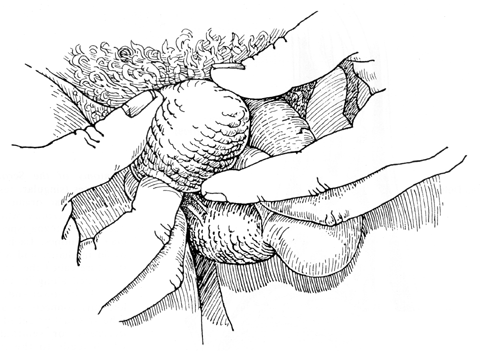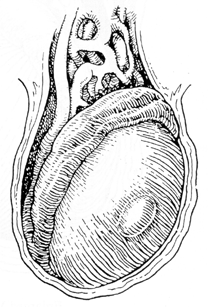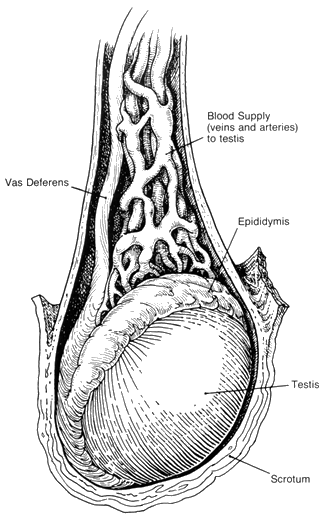|
Self-Examination of the Testes
 Self-examination of the testes is important for
early detection of cancer of the testicle, which can be felt as a small lump.
The self-examination technique is simple, and should be performed once a month
as follows: Self-examination of the testes is important for
early detection of cancer of the testicle, which can be felt as a small lump.
The self-examination technique is simple, and should be performed once a month
as follows:
When:
The best time is right after a warm shower when the scrotal skin is relaxed
and its contents can be felt most easily.
contents can be felt most easily.
How:
Examine each testicle gently with the fingers of both hands by rolling the
testicle between the thumb and forefingers (see illustration).
What to look for:
Look for a small lump about the size of a pea on the front or the side of the
testicle (see right). A natural rope-like structure, the epididymis, is
situated along the back of the testicle. Learn what it feels like so that you
do not confuse it with an abnormal mass.What to do:
Not all lumps are cancerous, but if you do find one, tell your physician at
once. When diagnosed early, testicular cancer is completely curable.
Anatomy of the Scrotum

The testes (singular, testis) are two glandular
organs located within the scrotum which produce spermatozoa (sperm) and male
hormones. Each testis is ovoid in shape, and a tubular structure called the
epididymis is situated along its back portion. At its lower end, the epididymis
connects to a longer tubular structure called the vas deferens, or seminal duct,
which leads to the prostate gland.
The epididymis collects sperm produced in the
testis. The sperm then travel up the vas deferens to the prostate gland in the
seminal fluid. There, secretions are added which aid sperm motility (ability to
move about), producing semen. Semen is released from the prostate gland into the
urethra, through which it exits the body during sexual intercourse.
|